Amarok
Release Date: June 14, 1990
Location: Roughwood Croft, choir recorded at CTS Studios, Wembley
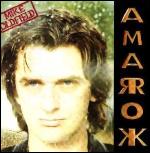
0:00 Fast Riff Intro
2:32 Intro
5:46 Climax I - 12 Strings
6:18 Soft Bodrhan
7:20 Rachmaninov I
8:35 Soft Bodrhan 2
9:29 Rachmaninov II
9:56 Roses
10:42 Reprise I - Intro
12:45 Scot
13:16 Didlybom
15:00 Mad Bit
15:56 Run In
16:11 Hoover
18:00 Fast Riff
19:57 Lion
21:57 Fast Waltz
23:42 Stop
24:33 Mad Bit 2
24:46 Fast Waltz 2
25:06 Mandolin
26:07 Intermission
26:23 Boat
29:27 Intro Reprise 2
32:07 Big Roses
33:13 Green Green
34:24 Slow Waltz
36:04 Lion Reprise
37:05 Mandolin Reprise
37:47 TV am/Hoover/Scot
39:50 Fast Riff Reprise
42:22 Boat Reprise
43:32 12 Rep / Intro Waltz
44:12 Green Reprise
44:46 Africa I: Far Build
48:00 Africa I: Far Dip (**)
48:46 Africa I: Pre Climax
49:32 Africa I: 12 Climax
50:24 Africa I: Climax I
51:00 Africa II: Bridge
51:17 Africa II: Riff
51:34 Africa II: Boats
51:52 Africa II: Bridge II
52:10 Africa II: Climax II
54:22 Africa III: Baker
|
Also Appearing
Clodagh Simonds, Bridget St. John, Janet Brown
Paddy Moloney
African Musicians organized by Julian Bahula
Produced and Engineered by Tom Newman
Cover and Booklet by William Murray
Instruments:
Bowed Guitar, Acoustic Guitar, Electric Guitar, 12-String Guitar, Classical Guitar, Bass guitar, Sitar Guitar, Glorfindel Guitar, Highly Strung Guitar, Flamenco Guitar, Bazouki, Mandolin, Ukulele, Steinway Piano, Banjo, Farfisa Organ, Lowrey Organ, Shoes, Hoover, Glockenspiel, Marimba, Bodhran, Northumbrian Bagpipes, Clay drums, Triangle, Tambourine, Wonga Box, Bell Tree, Sticks, Finger Cymbals, Toy dog, Melodica, Chairs, Psaltry, Spinet, Flamenco Guitar, Jew's Harp, Penny Whistles, Bass Whistles, Punch Ball and Club, Spoons, Referee's Whistle, Fingernails, Pan Pipes, Glass of Water, Guitar Tuner, Violin, Door, Face Slap, Toothbrush and teeth, Vox Organ, Fake Radio, Contents of Aeromodeller's toolbox, Glass, Hammer and Bucket, Fake Firework, Rototom, Cabasa, Bongos, Orchestral Bass Drum, Timpani, not much synth at all really, Kalimba, Long Thin metallic hanging Tubes.
Personal Assistant: Jeremy Parker
Technical Adviser: Richard Barrie
A fully digital recording
Cover by William Murray |
Notes
Since getting the Fairlight CMI in the early 1980s, Mike's albums had become increasingly sequencer-driven, something further encouraged by the arrival of sequencing software running on the Atari ST and the STacy portable computer, meaning Mike could even sequence music on holiday.
Amarok was to represent a return to Mike's roots in hand played music, abandoning his sequencers and using minimal editing, with producer Tom Newman making sure Mike stuck to the rules.
The album has a wide dynamic range, partly out of Mike's desire to make Amarok an "angry, protest album" against Virgin, saying "I was imagining Simon Draper of Virgin driving his Lamborghini with the music up loud, so I put these enormous brass stabs in there, obscene amounts of volume just to irritate him." (MOJO, November 1998).
As part of the quest for high dynamic range, the album was the first of Mike's to be recorded to digital tape, using a Sony 3348 48 track machine. Technical engineer Richard Barrie says "I’d spent a lot of time trying to get the studio incredibly quiet, so the dynamic range was really big, and what I wanted to at the front end of the album, but he wouldn’t let me do it, was I wanted to go to the other end of the live room and drop a pin on the floor and say ‘this is the bottom of the dynamic range’, up to...you know, to the maximum...but he wouldn’t let me do it!"
Richard Barrie also recalls some of the lengths that they went to in order to capture some of Amarok's more unusual sounds, notably the sound of Mike's sports car revving up: "I ended up putting microphones all the way down the drive, and then Michael was in the car with a set of headphones on - and Tom was in the studio - waiting for the cue to go, and then I had to break the headphones link, so that Michael could then go revving up the drive! But that was it, the sport on Amarok was no editing, everything had to be played at the correct point in the thing. Mad! Absolutely mad!"
There is a hidden message in Amarok - at 48:05 some morse code can be heard (played on a bright synth sound). It actually spells out "F*** off RB" (with RB standing for Richard Branson). Mike was annoyed at Virgin's lack of promotion for the album (although if he really had made it deliberately uncommercial, Mike would surely have expected them not to promote it...), and so took out his own advertising campaign. Part of the campaign was Mike offering a prize of £1000 to the first person to find the hidden message.
The cover photograph was taken by Mike's old friend William Murray, who also wrote the story found inside the CD booklet. Mike helped spark off William's interest in photography during the mid 70s, when he gave William a camera as a present, leading to him eventually becoming a professional photographer. It was, according to Murray, intended to be "reminiscent of Ommadawn" and he told David Porter that "I thought this will be easy, put him behind a bit of glass, put some water on the glass, ....woof, no trouble. Then you realise how good Bailey is, it's not as easy as I thought by a long shot." (David Porter interview, 1990). The metal lettering was hand crafted from brass by Tom Newman.
[Richard Barrie quotes from an interview by Richard Carter, February 12th 2014]
Personnel
| ▸ | Tom Newman (producer) | | Also appears in: Tubular Bells, Hergest Ridge, Platinum, Five Miles Out, Islands, Heaven's Open, Tubular Bells II, The Songs of Distant Earth, Voyager
| | ▸ | Richard Barrie (technical engineer) | | Also appears in: QE2, Five Miles Out, Islands, Earth Moving, Heaven's Open, Tubular Bells II, The Songs of Distant Earth, Voyager
| | ▸ | Julian Bahula (musician) | | The leader of Jabula, he came to fame in the 60s in South Africa playing in 'The Molombo Jazzmen' (later to be shortened to Malombo) led by Philip Tabane. He moved to London with the band Jo'burg Hawk, a group of both black and white South Africans who weren't allowed to play together in their homeland. Though he was not keen on doing sessions for other artists, he made three exceptions - Mike Oldfield, Stevie Wonder and Dick Heckstall-Smith. Also appears in: Ommadawn
| | ▸ | Janet Brown (musician) | | Well known in the UK as an impersonator of prime minister Margaret Thatcher. She impersonates Mrs Thatcher again at the end of Amarok (the 'Hello everyone...' bit at 54:34). She died in 2011.
|
| | ▸ | Paddy Moloney (musician) | | Leader of Irish folk group 'The Chieftains', which Paddy formed in 1963. Most famously, the group featured on the soundtrack to the Stanley Kubrick film 'Barry Lyndon'. Also appears in: Ommadawn, Five Miles Out
| | ▸ | Clodagh Simmonds (musician) | | Had previously been a member of Irish progressive folk band 'Mellow Candle' as well as having played Harpsicord and Mellotron on the song 'Sarah' on Thin Lizzy's 'Shades of a blue orphanage' in 1972. The group's drummer was Mike's friend William Murray. She also sang with the group Jade Warrior, alongside Jon Field (flute on Tubular Bells). Also appears in: Hergest Ridge, Ommadawn, Tubular Bells III, Return To Ommadawn
| | ▸ | Bridget St John (musician) | | British folk rock singer. Made some LPs on the Dandelion record label, run by British DJ John Peel in the early 70s (albums on this label are now extremely rare and change hands for huge amounts of money). Did some vocals for Kevin Ayers' Shooting at the moon album. She put her recording career on hold in 1976 to move to New York. Also appears in: Ommadawn, Earth Moving
| | ▸ | William Murray (cover artwork) | | Drummer, who Mike would have met in 1971 while recording 'Whetevershebringswesing' with Kevin Ayers. He played with Richard and Linda Thompson's 'Sour Grapes' band, as well as with Mellow Candle. He also played drums with Kevin Ayers in 1971 on the 'Whatevershebringswesing' album and later worked with Paul Kossoff. He was a good friend of Mike's. Mike bought William Murray a camera as a present, which sparked off an interest in photography. Helater moved to Dallas, Texas, USA, where he worked as a photographer. William took the photograph of Mike that's on the cover of Amarok. He died in 1999. Also appears in: Hergest Ridge, Ommadawn
|
|
Instruments
| Miscellaneous stringed instruments |
| Violin |
|
|
| Ukulele |
|
|
| Bowed Psaltery |
|
|
| John Le Voi Bouzouki |
Flat-backed bouzouki, sold via Chandler Guitars in February 2006. |
|
| Gibson RB-250 Mastertone Banjo |
Mike appeared with this banjo at the Tubular Bells II premiere concert in Edinburgh. Its appearance is consistent with a post-1960s RB-250, so our current best guess is that it's the same banjo which Mike used on every album from Ommadawn onwards.

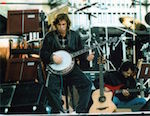 |
Also used in Ommadawn, Crises, Tubular Bells II
|
| Mike Vanden 'MJV' F4 style Mandolin |
Originally bought from John Alvey Turner's music shop. Sold via Chandler Guitars in December 2007.
       
 |
Also used in Voyager, Tubular Bells 2003
|
| Percussion instruments |
| Bodhrán |
18" bodhrán decorated with a St John Eagle from the Book of Kells. The bodhrán (pronounced as bough-rahn or bow-rahn) is an Irish frame drum made from goatskin, played with a beater called a tipper or cípín. A bodhrán was also used on Return To Ommadawn in 2016. |
Also used in Ommadawn, Incantations, Five Miles Out, Voyager, Return To Ommadawn
|
| Electric guitars |
| Danelectro/Coral Sitar |
An electric guitar with a special bridge to produce a buzzy sitar-like sound.

 |
Also used in Islands, Guitars
|
| 1965 Fender Telecaster |
Neck date of November 1965 (s/n L807280). This guitar used to be owned by Marc Bolan. Mike added an extra pickup - made by Bill Lawrence - to it, with the help of his dad in their garden shed. Mike later took all the finish off the guitar, leaving it as bare wood. The guitar was offered through Chandler for £20,000 but wasn’t sold. It was then to be auctioned off by Bonhams on June 20, 2007 (Lot 391) with an estimate of £25,000 - 35,000. Next attempt was on January 15, 2008 (Lot 361, estimate £10,000 - 15,000). The last attempt was made on December 16, 2009 (Lot 277, estimate £8,000 - 12,000). All attempts failed due to low bids and the guitar was withdrawn. It was sold in January 2010 by charity SANE to English guitarist Keith Smart. Video
                  
 |
Also used in Tubular Bells, Ommadawn, Five Miles Out, Tubular Bells 2003
|
| 1963 Fender Stratocaster, fiesta red |
s/n L08044. Mike once said in an interview (The Raft) that this was his favourite guitar and that he'd never sell it. However, he finally decided to part company with it in December 2007 and sold it through Chandler guitars, fetching £30,000.
         
 |
Also used in Discovery, Tubular Bells II, The Songs of Distant Earth, Voyager, Tubular Bells III, Guitars, Tubular Bells 2003, Light + Shade
|
| 1957 Gibson Les Paul TV model |
s/n 7 2031. This guitar was modified with a 2 octave fretboard. It was bought by a Scottish fan.
          
 |
Also used in Ommadawn, Incantations, Five Miles Out, Discovery
|
| Höfner Shorty Super "Tubular Bells Guitar" |
Unusual presentation guitar, 1970s, the miniature, natural-finish body with pickup marked Shadow, built-in battery-powered speaker with on/off switch, one volume and one tone control, black scratchplate with Mike Oldfield in white, backplate engraved "To Mike from all your friends from Virgin Germany", neck with dot markers, headstock with Schaller machineheads and 'Tubular Bells' logo, with strap
      
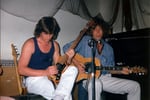 |
|
| 1989 PRS Signature, Vintage Yellow |
A particularly high grade, limited edition, version of the Custom 24. In Vintage Yellow.
           
 |
Also used in Earth Moving, Tubular Bells II, The Songs of Distant Earth, Voyager, Tubular Bells III, Guitars, Tubular Bells 2003, Light + Shade, Return To Ommadawn
|
| Vox 'electric mandolin' |
This is actually a mini 12 string electric guitar. Borrowed from Tom Newman, it used to belong to Cat Stevens. |
|
| Nylon-string guitars |
| 1974 Jose Ramirez 1A Traditional |
s/n 7987
          
 |
Also used in Hergest Ridge, The Orchestral Tubular Bells, Ommadawn, Voyager, Guitars, Tubular Bells 2003, Light + Shade
|
| 1975 Jose Ramirez 1A Flamenco |
s/n 8666. Sold through Chandler to a French Fan and later resold to a German fan.
            
 |
Also used in Ommadawn, QE2, Tubular Bells II, Guitars, Tubular Bells 2003
|
| Steel-string acoustic guitars |
| 1960 Martin 00-21NY |
Sold via Chandler Guitars to a Scottish fan in December 2007.
       
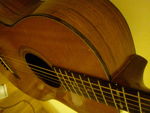 |
[?] This is likely the guitar used for the opening Fast Riff.
Also used in Voyager, Guitars, Tubular Bells 2003
|
| 1973 Martin D-28-12 |
Serial number 335787. Sold to a German fan through Chandler Guitars in December 2007.
     
 |
Also used in Ommadawn, Discovery, Tubular Bells III
|
| Bass guitars |
| PRS Bass 4, Vintage Yellow |
  
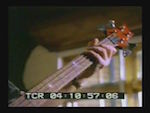 |
Also used in Tubular Bells II
|
| Guitar effects |
| Roland GP-8 |
Guitar effects processor used for Mike's trademark 90s distorted guitar sound. Sold via ebay in December 2007. |
Also used in Tubular Bells II, The Songs of Distant Earth, Tubular Bells 2003, Return To Ommadawn
|
| Pianos |
| Steinway Model B |
Studio grand piano. No 137655. When this piano was auctioned, it was listed as being a 6'11" piano, c.1910, with a rosewood case. |
Also used in Tubular Bells 2003
|
| Organs |
| Farfisa Professional Organ |
Return To Ommadawn used a Farfisa sotware emulation.

 |
Having sold his original Farfisa organ, Mike obtained another in preparation for Tubular Bells II. He found it in a school for the disabled, and swapped it for his Yamaha DX7.
Also used in Tubular Bells, Hergest Ridge, Ommadawn, Incantations, Crises, Tubular Bells II, Tubular Bells 2003, Return To Ommadawn
|
| 1970 Hammond L.122 Organ |
Return To Ommadawn used an Hammond software simulation. |
Also used in Heaven's Open, Tubular Bells II, Tubular Bells 2003, Return To Ommadawn
|
| Lowrey Organ |
|
Also used in Tubular Bells, Hergest Ridge, Tubular Bells II, Tubular Bells 2003
|
| Vox Continental Organ |
Return To Ommadawn used a Vox software emulation. |
Also used in Return To Ommadawn
|
| Synthesisers |
| Roland VP-330 |
Analogue vocoder keyboard, often also used for its string sound. |
Mike told H & SR Magazine that he'd used this on the album for "some robot voices".
Also used in Crises, Discovery
|
| Roland D-50 |
Linear Algorhythmic synthesiser keyboard. |
Mike told H & SR magazine that he'd used "a string sound and a bell-like sound" from the D50.
Also used in Islands, Earth Moving, Heaven's Open, Tubular Bells II, The Songs of Distant Earth
|
| Microphones |
| Bruel & Kjaer 4040 |
Large diaphragm omnidirectional condenser microphone. Serial Number 001. |
Also used in Heaven's Open, Voyager, Tubular Bells 2003
|
| Bruel & Kjaer 4011 |
Small diaphragm cardioid condenser microphone. |
Also used in Heaven's Open, Voyager, Tubular Bells 2003
|
| Bruel & Kjaer 4006 |
Small diaphragm omnidirectional condenser microphone.

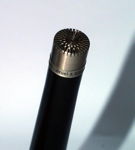 |
Also used in Heaven's Open, Voyager, Tubular Bells 2003
|
| Studio effects and outboard |
| AMS Digital Delay |

 |
|
| Brooke Siren DPR502 MIDI controlled noise gate |
|
|
| Neve 1073 Mic Preamps |
Used on Amarok |
Also used in Tubular Bells 2003
|
| Quantec Room Simulator |
Digital reverb unit, released in 1982.

 |
Also used in Crises
|
| Yamaha REV-7 |
Reverb unit.

 |
|
| Tape recorders |
| Sony PCM-3348 |
48 track digital multitrack tape recorder, recording to Ampex 467 1/2" oxide tape.

 |
Also used in Heaven's Open, Tubular Bells II, The Songs of Distant Earth, Voyager, Tubular Bells III
|
| Mixing desks |
| Harrison Series X |
The world's first fully automated mixing desk. Where desks like Mike's Neve 8108 often had little more than automation/recall of channel levels and mutes, the Harrison was able to automate other parameters like panning and aux sends, making it far easier to recall a mix. It was released in 1985, and Mike claimed that his was the first in England.

 |
Also used in Islands, Earth Moving, Heaven's Open, Tubular Bells II
|
|
|

